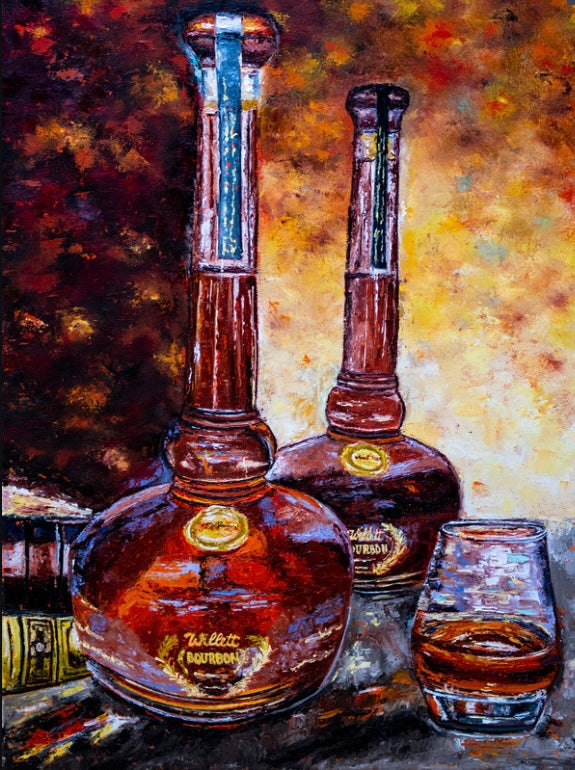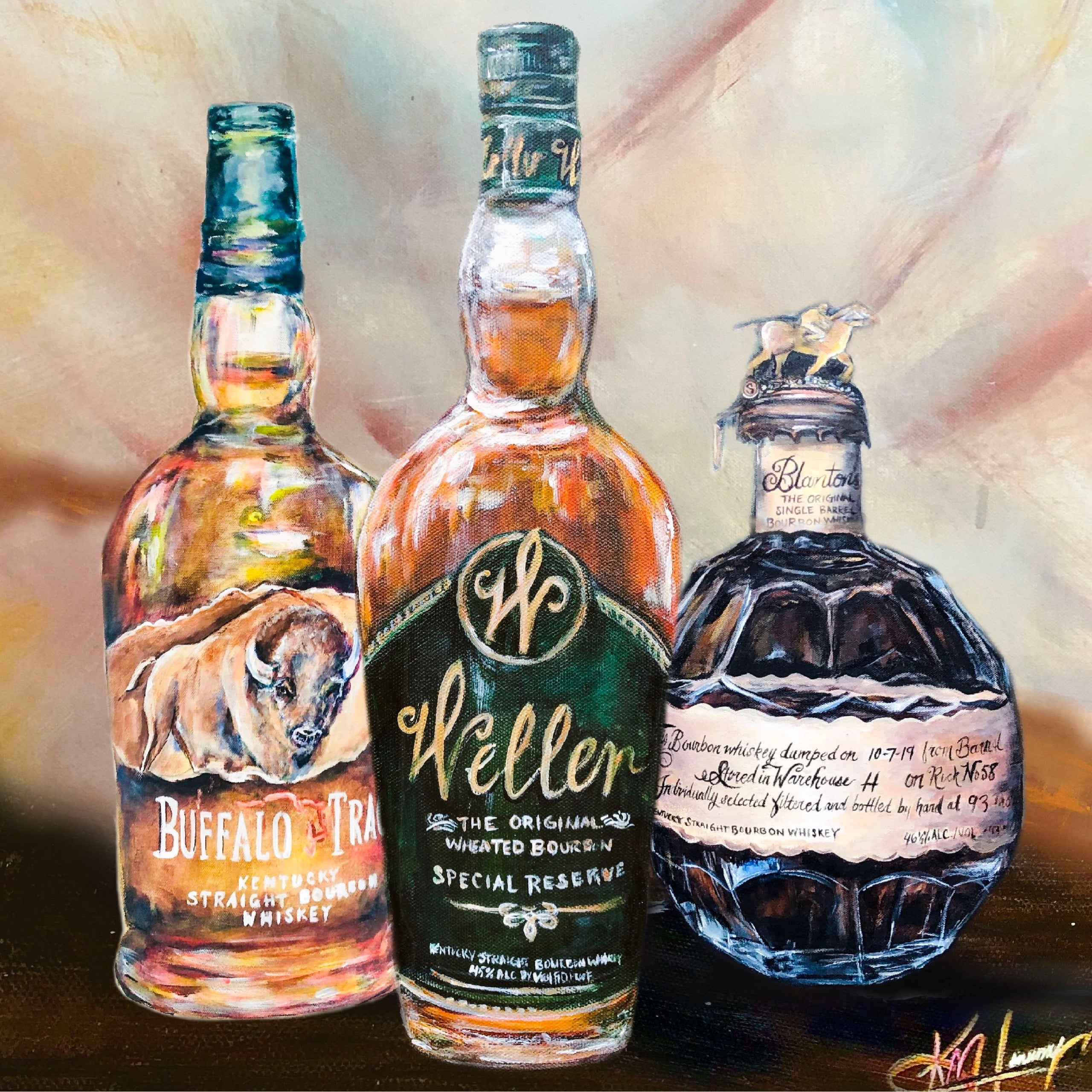Transform Your Space with Stunning Whiskey Art Inspired by Nature
Transform Your Space with Stunning Whiskey Art Inspired by Nature
Blog Article
The Significance of Whiskey Art in Celebrating Heritage and Craftsmanship in the Beverage Sector
The intricate partnership in between bourbon art and the party of heritage and workmanship within the drink market can not be overemphasized. With thoughtfully developed labels and bottles, bourbon brand names encapsulate their historical roots and the artisanal abilities that specify their manufacturing techniques. This artistic dimension not just boosts market charm yet additionally serves as an avenue for cultural storytelling, fostering a much deeper connection in between the craft and the consumer. As we explore the various elements of this subject, appealing concerns about the influence of modern-day patterns on conventional practices emerge, triggering additional examination.
The Historical Origins of Whiskey
At the heart of bourbon's allure exists a rich tapestry of historic roots that map back to ancient people. The origins of bourbon can be linked to the purification practices of the Sumerians and Babylonians around 2000 BCE, where very early forms of fermented grain drinks started to emerge. It was in the Center Ages that the art of distillation progressed significantly, especially in Ireland and Scotland, leading to the production of whiskey as we understand it today.
The term "bourbon" itself originates from the Gaelic word "uisce beatha," indicating "water of life." This expression underscores the cultural relevance of whiskey in Celtic societies, where it was commonly connected with rituals, events, and public bonding. By the 15th century, purification became an acknowledged craft within reclusive areas, leading the way for the establishment of legal distilleries.
As profession courses increased, whiskey's popularity grew, transcending regional limits and recording the rate of interest of lovers worldwide. Realism Art. This historic trip mirrors not only the craftsmanship behind whiskey production but likewise its essential function in social and social contexts, noting it as a substantial drink throughout background
Artistic Expression in Branding
Scotch branding stands as an engaging crossway of creativity and business, where visual identity plays a vital function in forming consumer understanding. The looks of bourbon tags, packaging, and advertising materials reflect not only the brand name's tale however likewise its core values and heritage. Through artistic expression, distilleries share a story that reverberates with consumers, evoking feelings and triggering links.
Making use of color, typography, and images in branding serves to distinguish items in a saturated market. Conventional concepts may evoke a feeling of authenticity and workmanship, while modern layouts can represent technology and forward-thinking. This calculated artistic instructions enhances brand acknowledgment and loyalty, permitting consumers to build a personal partnership with the whiskey they select.
Moreover, creative expression in branding often offers as a celebration of regional heritage. Distilleries regularly incorporate regional symbols or historical referrals into their styles, creating a local color that invites customers to take part in a broader social experience. Inevitably, the artistry behind scotch branding not just boosts visual charm yet additionally enriches the general story of the brand name, fostering a deeper recognition for the workmanship and heritage embedded in each bottle.
Craftsmanship in Bottle Style
The virtuosity evident in whiskey branding prolongs past aesthetic identification to incorporate the craftsmanship involved in bottle style. Each container acts as a vessel not simply for the spirit within, yet additionally for the story it tells about its practice, top quality, and beginning. The style procedure needs careful interest to detail, as aspects such as product, closure, and form add dramatically to the total assumption of the scotch.
Craftsmanship in bottle design entails picking high-grade glass that can boost the scotch's color and clarity, while also giving a responsive experience for the consumer. The silhouette of the container have to be both cosmetically enticing and practical, typically reflecting here the heritage of the brand name. Lots of distilleries choose for unique forms or embossed logos that stimulate a sense of authenticity and background.
Furthermore, the label design and typography play a crucial duty in connecting the brand name's narrative. Bourbon Art. A well-crafted bottle not just astounds the consumer's eye yet also strengthens the brand name's dedication to top quality and practice. This way, the workmanship of container design comes to be a crucial facet of the whiskey experience, merging creativity with a profound regard for heritage
Cultural Importance of Whiskey Art
Celebrating practice and craftsmanship, the social importance of bourbon art goes beyond simple appearances, intertwining with the social and historic narratives of the areas from which it comes from. Each container works as a canvas, portraying the special tales, folklore, and practices that have shaped neighborhood whiskey-making practices. The intricate layouts commonly reflect the heritage of the distillers, integrating icons and motifs that resonate with the society and worths of their communities.

In addition, bourbon art plays an essential role in common celebrations and events, offering as a tangible link between people and their shared experiences. By appreciating the creativity in whiskey packaging, customers grow a deeper understanding and regard for the craft, inevitably enriching their pleasure of the beverage itself.
Modern Trends in Bourbon Presentation
Recently, the discussion of bourbon has actually evolved to reflect modern tastes and trends while still recognizing standard workmanship - Whiskey Art. Distilleries are progressively concentrating on aesthetic elements that enhance the total drinking experience, bridging the space between heritage and modernity
Cutting-edge container layouts have emerged, frequently including lasting products and imaginative labels that inform compelling tales. Lots of brands now collaborate with neighborhood artists, instilling their products discover this info here with distinct visual expressions that resonate with consumers. Additionally, limited-edition launches are usually packaged in collectible containers, adding value and charm for lovers.

Conclusion
To conclude, scotch art acts as an important avenue for sharing the heritage and workmanship intrinsic in the beverage sector. Through intricate branding, ingenious container layouts, and culturally considerable creative elements, scotch brand names properly recognize their customs and link with consumers. This imaginative story not just elevates the appreciation of scotch yet additionally strengthens see page neighborhood identification and pride amongst producers. Inevitably, scotch art plays a vital role in preserving and commemorating the rich social tapestry of whiskey-making.


Workmanship in bottle style includes choosing top quality glass that can boost the whiskey's shade and clarity, while also providing a tactile experience for the customer. In this method, the craftsmanship of container style becomes an essential facet of the bourbon experience, combining creativity with a profound respect for heritage.
In verdict, scotch art serves as a crucial channel for expressing the heritage and craftsmanship intrinsic in the beverage sector.
Report this page